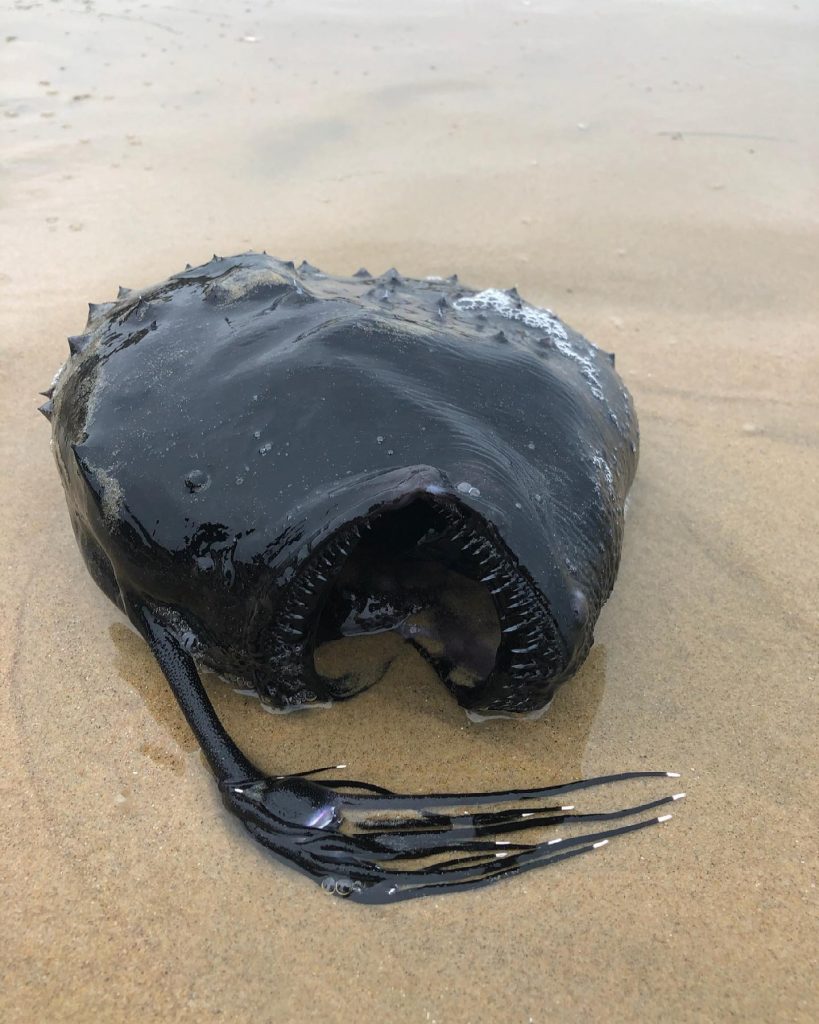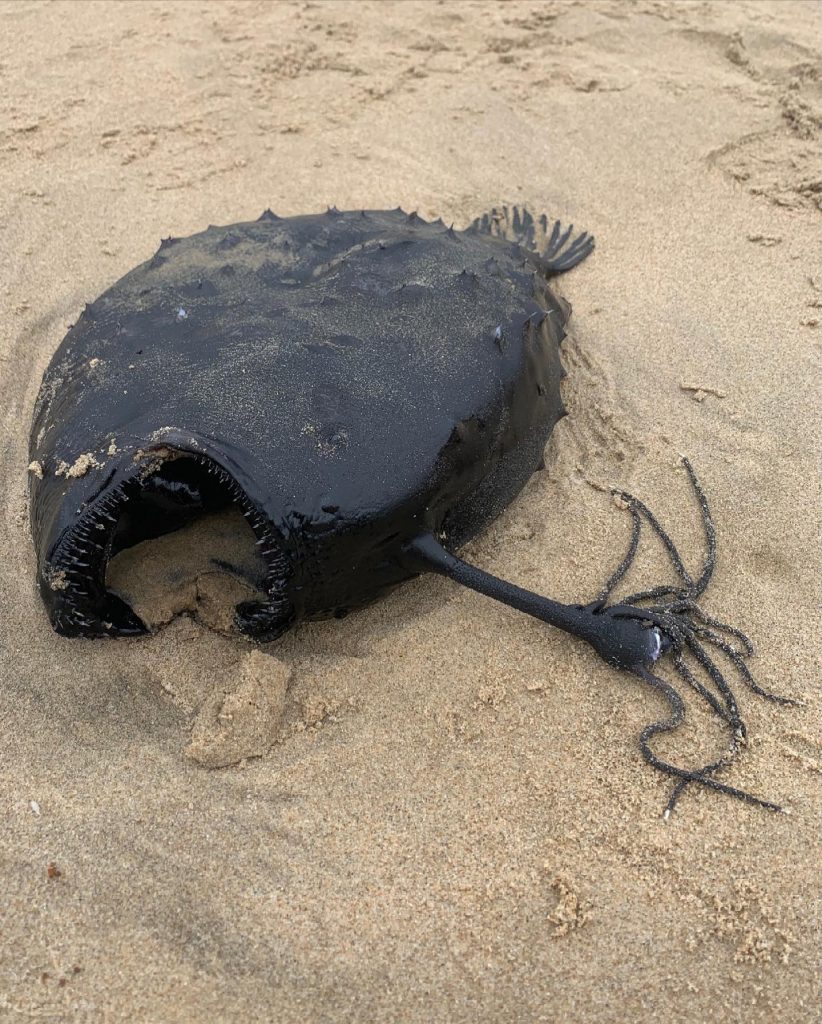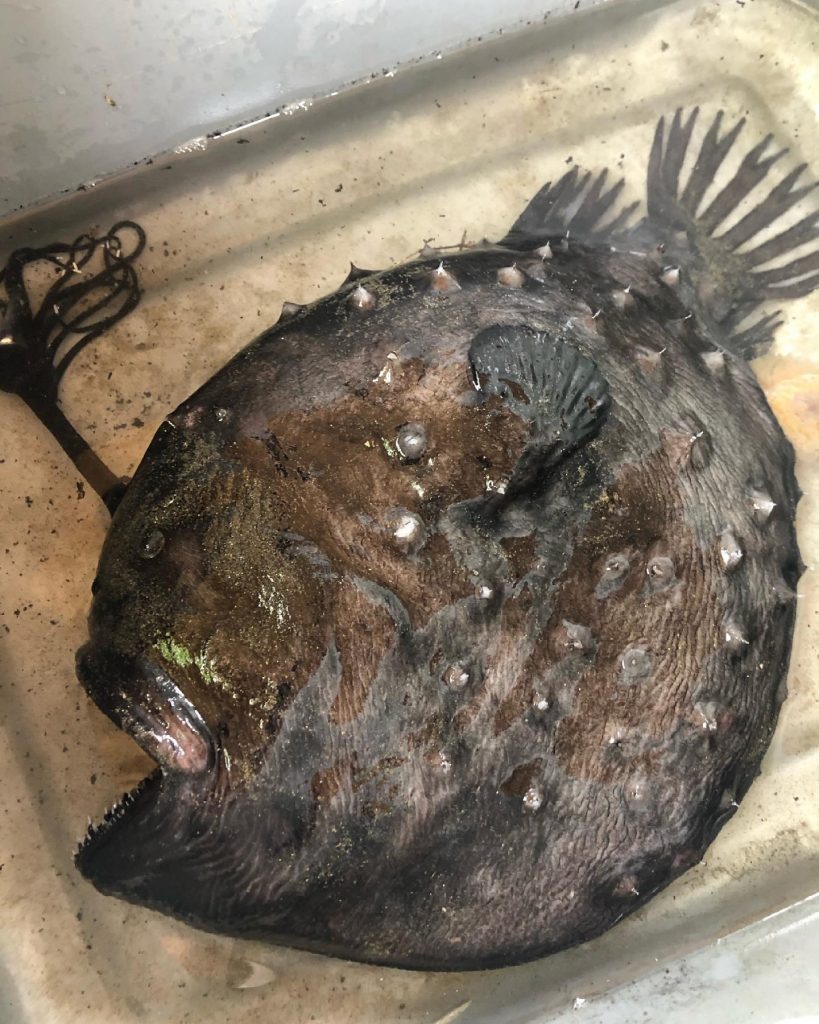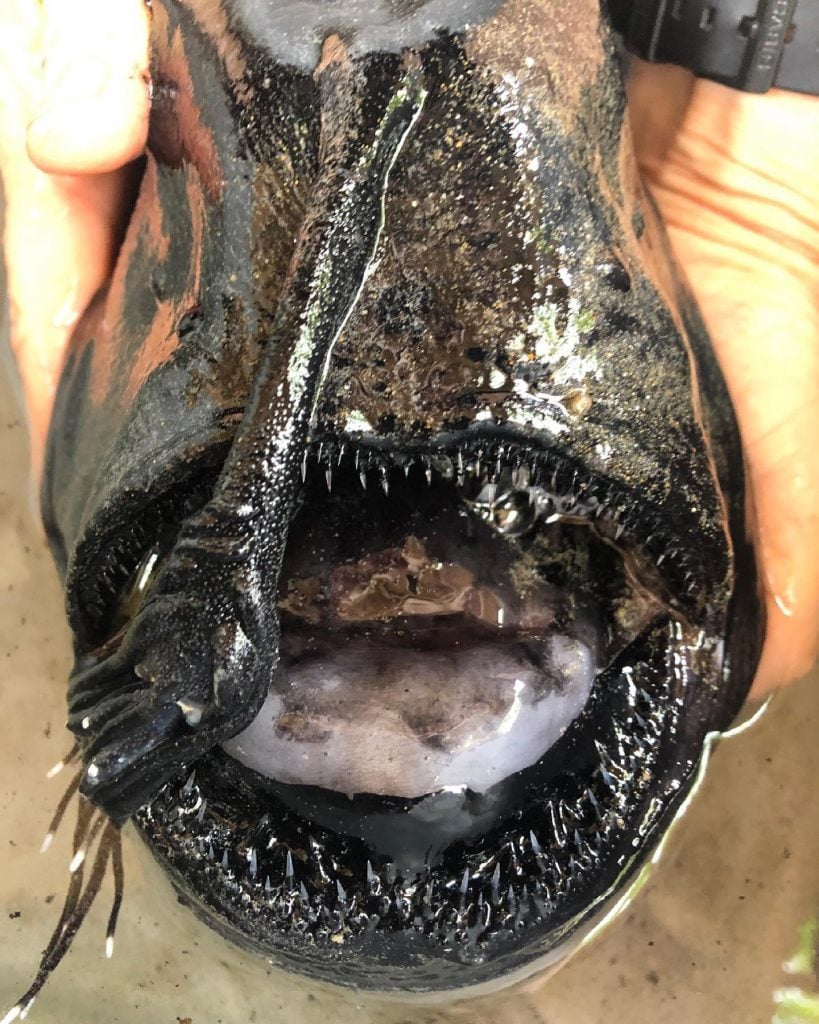What is going on in the waters off Southern California right now? After the fatal beaching of 8 whales over the last month, now a rare, deep-sea anglerfish has been found dead on Newport Beach at Crystal Cove State Park. Is this Fukushima radiation or are these fish feeling vibrations of the next big one…




Meanwhile, 8 gray whales were found dead in the region of San Francisco in the last month. Scientists believe the numbers observed on shore are a fraction of the real die-off. They say many more die at sea and are never observed, instead floating offshore or sinking to the bottom.
But what is killing those animals?
The causes of recent deaths are unclear. While some may have died by ship strikes, sonars and secret military tests, the reasons most died are unknown.
Fukushima
On March 11, 2011, a magnitude 9.0 earthquake—one of the largest ever recorded—occurred 80 miles off the coast of Japan. The earthquake created a series of tsunamis, the largest estimated to be over 100 feet, that swept ashore. In addition to the tragic toll of dead, injured, and displaced people, the earthquake and tsunamis badly damaged the Fukushima Dai-ichi nuclear power plant, eventually causing four of the six reactors there to release radiation into the atmosphere and ocean.
What has been released from the Fukushima reactors and how dangerous is it?
Releases from the Fukushima reactors have included dozens of radioactive elements, but with regard to materials released into the ocean, most of the attention has been on three radioactive isotopes released in large amounts: iodine-131, cesium-137, and cesium-134.
Iodine-131 decays quickly and any that was released from Fukushima is no longer detectable in the environment, but it was a significant health concern at the start of accident.
Cesium-137 and -134 were released in the largest amounts. At the height of the accident, levels in the ocean near the docks at the reactors were 50 million times higher than before the accident and, at those levels, were a direct threat to marine life.
Levels dropped quickly after the first month and today are many thousands of times lower, which is less of a direct health threat, but still an indication of ongoing leaks.
Cesium-137 has a relatively long half-life (30 years), but it is also present in the ocean as a result of nuclear weapons testing in 1950s and 1960s.
Cesium-134 is much shorter-lived, which means that any detected in seawater samples must have come from Fukushima. Because it was released in equal amounts with cesium-137, we can use its presence to determine how much contamination was released from the reactor site.
How long will radiation from Fukushima remain in the environment?
Radioactive materials are, by their very nature, unstable and decline in concentration over time. This change is measured in half-lives—the length of time it takes for the radiation to decrease by one-half.
Every radioactive substance has a different half-life, ranging from fractions of a second to billions of years. Cesium-137, for example, has a half-life of 30 years and so, depending on its concentration, is a potentially serious health threat for decades or centuries. Iodine-131, on the other hand, has a half-life of just 8 days and so loses much of its potency after just days and effectively disappears after one to two months.
Another radionuclide of concern, cesium-134, has a half-life of two years, which means that it is rapidly disappearing. Because of its short half-life, cesium-134 is the one isotope that, if we find it, could have come only from Fukushima. It was also released in equal proportion with cesium-137, so when we detect cesium-134, we can calculate how much total contamination was released.
How will the radioactive material released in Japan affect humans?
Every additional source of radioactivity carries some additional health risk, but these risks vary with many factors, including the dose (how much a person is exposed to and for how long) and which isotopes you are exposed to, as well as individual sensitivities—there is a higher concern in children, for example.
Fukushima will likely have the most significant long-term health impacts on those who had the highest exposures, so those living closest to the plant or in areas with higher fallout. This is because the further the radioactive material travels, the more dispersed (and the less harmful) it becomes.
Although measuring levels of radioactive contaminants in the oceans is challenging, measuring health effects associated with those levels is even more difficult and controversial.
This is in part because increases in cancer are hard to attribute to any single cause and it is difficult to detect small increases in cancer over time when 30 percent of us will get cancer of some form in our lifetimes. We should always be concerned, but we should also realize that different levels, time, and manner of exposure can have widely varying health risks.
Deep-sea fish feel movements of active faults
Deep-sea fish living near the sea bottom are more sensitive to the movements of active faults than those near the surface of the sea.
For example, some are claiming that oarfish washing ashore is a sign that an earthquake will soon follow. Shortly before the 2011 Tohoku earthquake and tsunami struck Japan, about 20 oarfish stranded themselves on beaches in the area.
The oarfish is known in Japan as ryugu no tsukai or “messenger from the sea god’s palace.” Dozens of the deep-sea denizens were discovered by Japanese fishermen around the time a powerful 8.8-magnitude earthquake struck Chile in March 2010.
This deep-sea anglerfish may have felt something too… So Fukushima or earthquake sign? [Facebook, WHOI]
Now subscribe to this blog to get more amazing news curated just for you right in your inbox on a daily basis (here an example of our new newsletter).
You can also follow us on Facebook and/ or Twitter. And, by the way you can also make a donation through Paypal. Thank you!
You should really subscribe to QFiles. You will get very interesting information about strange events around the world.














How did the Fukushima accident happen!
Speculations that the disaster was caused by “HAARP” are misleading.
The HAARP systems are used for climate control. Strong X-Band radars direct wind currents and cloud formations. They neither cause earthquakes nor destroy power plants.
What happened at Fukushima was Japan’s attempt to create a cavity beneath the ocean floor to collect carbonaceous waste.
For that, atomic bombs were detonated in the underground, but instead of forming the closed cavity, the ground broke open. The consequences were earthquake, tsunami & destruction of the power plant.
Japan is now building such cavities on the west side, in the Sea of Japan. The crust is thicker there.
The real heavy radiation is in the underground. That is the reason of mass death of deep sea animals.
And a 6.0 earthquake near Fukushima today !
If your sushi glows-in-the-dark, then go back to eating steaks.
What is killing ocean life near Los Angels? 27,000 barrels of toxic DDT that was dumped into the ocean, and just being discovered.
https://themindunleashed.com/2021/04/scientists-horrified-as-over-27000-leaking-barrels-of-toxic-ddt-discovered-on-seafloor-near-la.html?utm_source=rss&utm_medium=rss&utm_campaign=scientists-horrified-as-over-27000-leaking-barrels-of-toxic-ddt-discovered-on-seafloor-near-la
Well I reported about this in october 2020: https://strangesounds.org/2020/10/ddt-dumping-site-los-angeles.html…
It seems people don’t have viral topics right now… Might also be one of the reason…
maybe the poles are headed to the bay of Bengal and the ability to navigate is eroding??
The apendage on that angler fish is what it uses to lure its prey into its mouth.